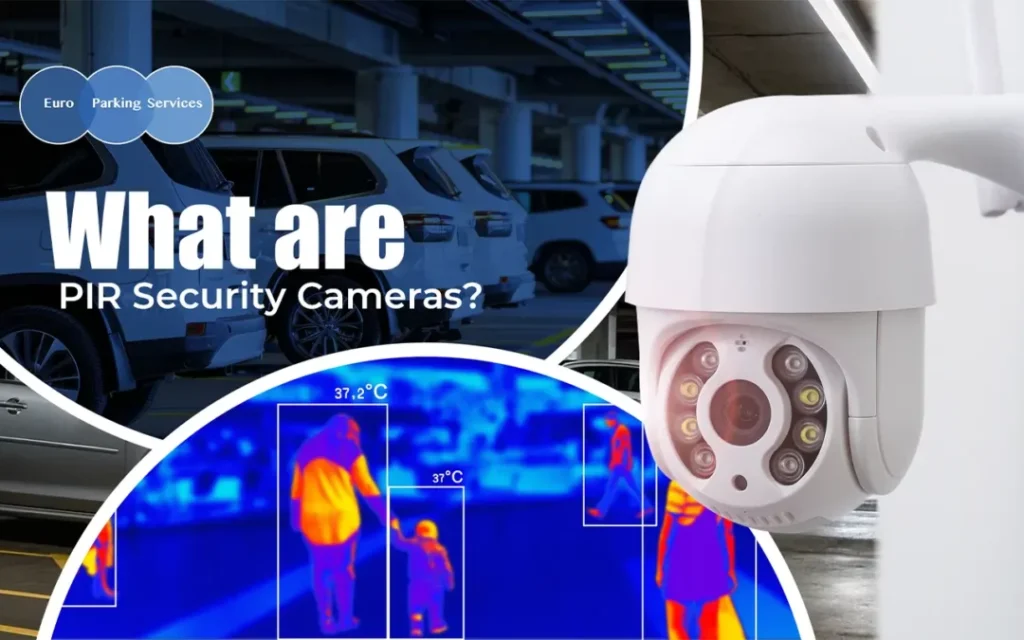I think when we buy a security camera we see many features and one of them is PIR. I saw this word when I was setting up my own camera and I did not know what it meant. That made me curious.
If we are using a camera to protect our home then we should understand what PIR means and how it works.In this article we talk about PIR in a way that is easy to understand. We explain what it is, how it helps and why it is important. I also share my personal experience and answer common questions. This guide is perfect for beginners and families who want to feel safe and confident.
What Does PIR Mean
PIR stands for Passive Infrared. It is a type of sensor used in security cameras to detect motion. These sensors do not send out signals. Instead they wait and sense heat from people or animals.
We should know:
- PIR sensors detect infrared radiation
- Infrared is a type of heat that living things give off
- When something warm moves the sensor notices it
- The camera then records or sends an alert
If we want smart motion detection then PIR is a good feature.
How PIR Works in a Security Camera
PIR sensors are placed inside the camera. They look for changes in heat. If a person walks by the sensor sees the heat and tells the camera to start recording.
We should understand:
- PIR sensors stay quiet until they sense heat
- They do not react to shadows or light changes
- They help reduce false alarms
- They work well in day and night
If we want fewer false alerts then PIR is very helpful.
Why PIR Is Better Than Regular Motion Detection
Some cameras use pixel motion detection. That means they look for changes in the picture. But this can cause false alerts from wind or light.
PIR is better because:
- It only reacts to heat
- It ignores moving leaves or shadows
- It works even in low light
- It is more accurate
We should choose PIR if we want smart and reliable alerts.
My Personal Experience With PIR
I remember when I installed my first camera. It had pixel motion detection and I got alerts every time the wind moved a tree. That was annoying. Later I bought a camera with PIR. It only sent alerts when someone walked by. That made me feel better and I trusted the system more.
Now I use PIR cameras at my gate and backyard. They work well and I get fewer false alarms. I think this feature is very useful and we should look for it when buying a camera.
Where PIR Is Used
PIR sensors are used in many places.
We should know:
- Home security cameras
- Office surveillance systems
- Smart doorbells
- Motion lights
- Alarm systems
If we want smart motion sensing then PIR is a good choice.
Benefits of PIR in Security Cameras
There are many reasons why PIR is useful.
We should understand:
- It saves battery by recording only when needed
- It gives real alerts not false ones
- It works in dark and bright areas
- It helps protect our home better
- It is easy to use and set up
If we want peace of mind then PIR is a smart feature.
How to Check If a Camera Has PIR
When we buy a camera we should check the box or manual.
Look for:
- PIR sensor mentioned in features
- Motion detection based on heat
- Passive infrared written in specs
- Reviews that talk about PIR alerts
If we are not sure we can ask the seller or check online.
Tips to Use PIR Cameras Better
We should follow these tips for better results.
- Place the camera at the right height
- Avoid pointing it at hot surfaces
- Keep the lens clean
- Test the motion range
- Adjust sensitivity in the app
If we do these things then the camera works better.
Best PIR Cameras to Consider
Here are some popular cameras with PIR sensors.
- EufyCam S3 Pro
- Reolink Argus 3
- Blink Outdoor
- TP-Link Tapo C200
- Mi Home Security Camera
We should compare features and prices before buying.
Conclusion
I think PIR is one of the best features in a security camera. If we understand how it works and why it matters then we can choose better. We should look for PIR when buying a camera and use it the right way.
We should also test the camera, adjust the settings and place it properly. If we do that then we get real alerts and better safety. Let me know if you want help choosing a camera or setting it up. I am happy to share more tips and ideas.

